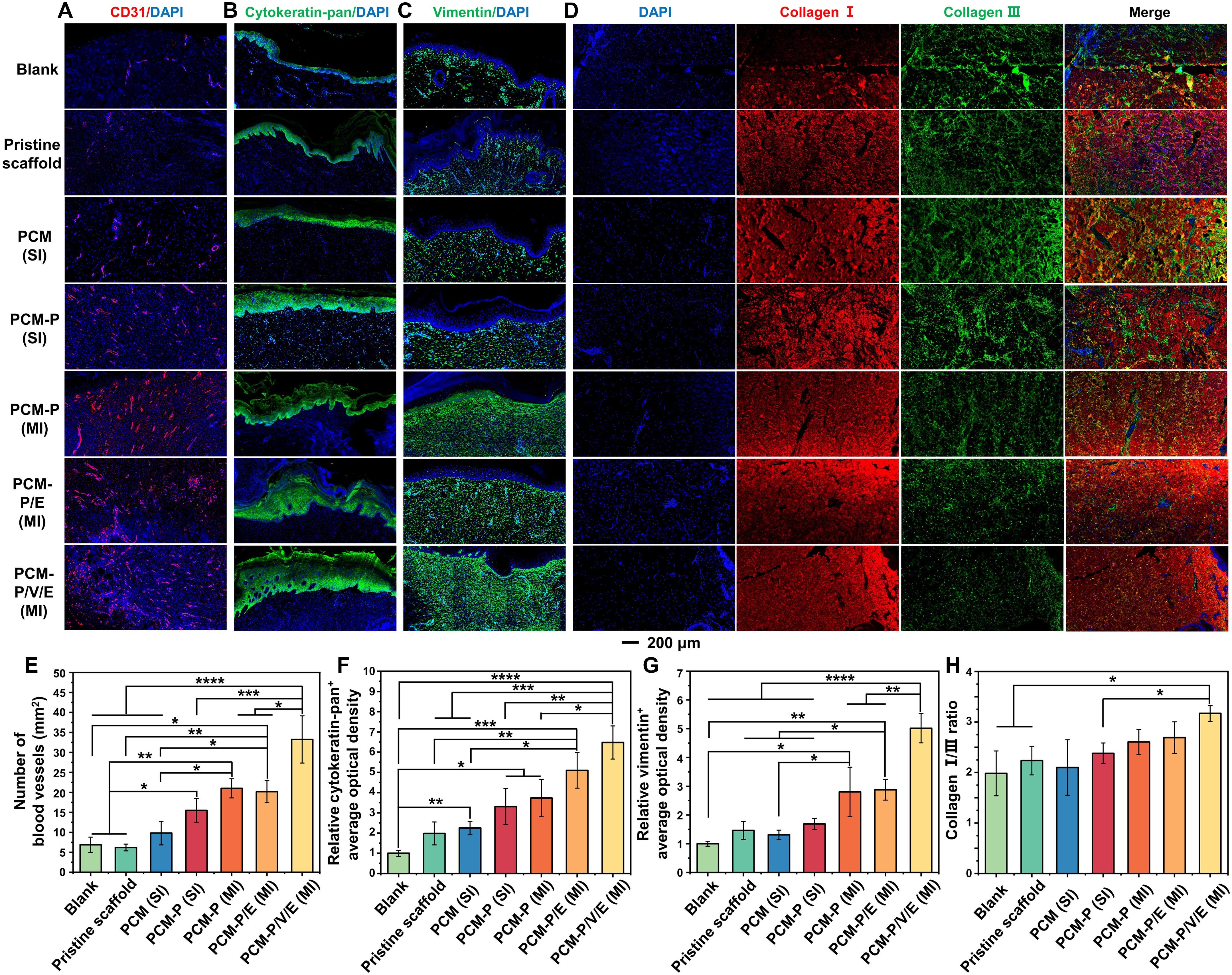Spatiotemporally controlled delivery of biological effectors from nanofiber scaffolds accelerates skin wound healing in porcine models
IF 12.5
1区 综合性期刊
Q1 MULTIDISCIPLINARY SCIENCES
引用次数: 0
Abstract
Skin wound healing is a dynamic process, yet scaffolds enabling stage-specific modulation remain limited. We fabricated a nanofiber scaffold from FDA-approved materials, consisting of two outer layers of radially aligned and random poly(ε-caprolactone) fibers and a middle layer of electrosprayed phase-change microparticles loaded with platelet-derived growth factor–BB (PDGF-BB)/vascular endothelial growth factor (VEGF) in the periphery and PDGF-BB/epidermal growth factor (EGF) in the center. Near-infrared irradiation through a photomask enabled spatiotemporal control of growth factor release, aligning PDGF-BB, VEGF, and EGF delivery with specific phases of wound healing to promote vascularization, cell proliferation, and tissue remodeling. In a preclinical porcine model, it enhanced closure and modulated the microenvironment by activating PI3K-Akt, MAPK, and immune pathways, up-regulating genes for survival and repair while down-regulating those linked to apoptosis and inflammation. With scalable manufacturing and large-animal efficacy, this scaffold holds translational potential for skin wound healing.

纳米纤维支架的生物效应物的时空控制递送加速了猪模型的皮肤伤口愈合
皮肤伤口愈合是一个动态的过程,然而支架能够进行阶段特异性调节仍然有限。我们用fda批准的材料制备了一种纳米纤维支架,该支架由两层径向排列和随机聚(ε-内酯)纤维组成,中间层是电喷涂相变微粒,外层装载血小板衍生生长因子- bb (PDGF-BB)/血管内皮生长因子(VEGF),中间装载PDGF-BB/表皮生长因子(EGF)。通过掩膜的近红外照射可以实现生长因子释放的时空控制,使PDGF-BB、VEGF和EGF的传递与伤口愈合的特定阶段一致,从而促进血管化、细胞增殖和组织重塑。在临床前猪模型中,它通过激活PI3K-Akt、MAPK和免疫通路来增强闭合并调节微环境,上调与生存和修复相关的基因,同时下调与凋亡和炎症相关的基因。这种支架具有可扩展制造和大型动物功效,具有皮肤伤口愈合的转化潜力。
本文章由计算机程序翻译,如有差异,请以英文原文为准。
求助全文
约1分钟内获得全文
求助全文
来源期刊

Science Advances
综合性期刊-综合性期刊
CiteScore
21.40
自引率
1.50%
发文量
1937
审稿时长
29 weeks
期刊介绍:
Science Advances, an open-access journal by AAAS, publishes impactful research in diverse scientific areas. It aims for fair, fast, and expert peer review, providing freely accessible research to readers. Led by distinguished scientists, the journal supports AAAS's mission by extending Science magazine's capacity to identify and promote significant advances. Evolving digital publishing technologies play a crucial role in advancing AAAS's global mission for science communication and benefitting humankind.
 求助内容:
求助内容: 应助结果提醒方式:
应助结果提醒方式:


